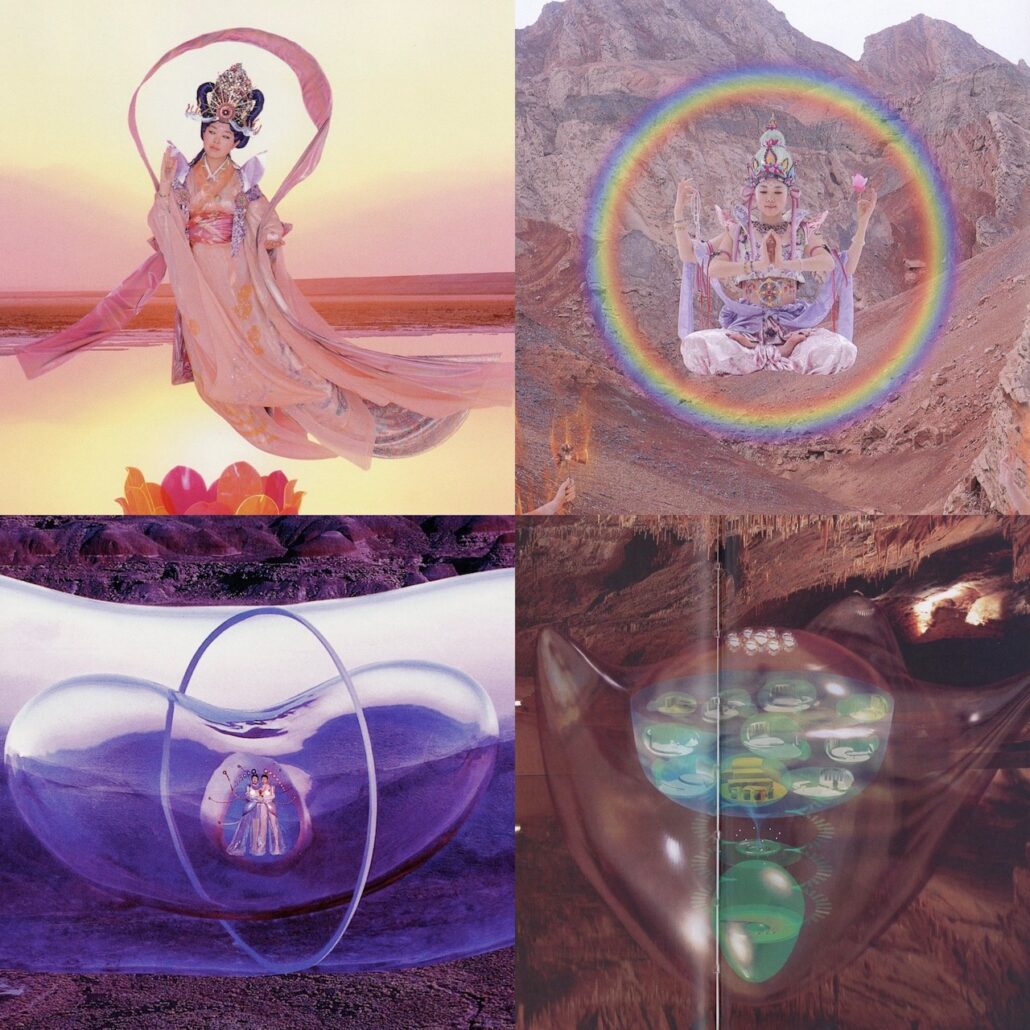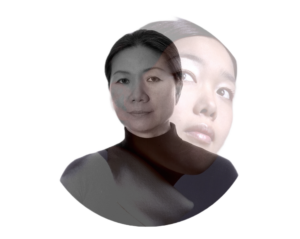Esoteric Cosmos
By the late 1990s, after Mori attempts to challenge the entertainment industries’ objectification of the female body as a “site of desire and pleasure,” her cosplaying and cyborgs evolve in an other-worldly combination of alien, deity and girl-next door types.[44] As argued by Allison Holland, Mori replaces her fascination of celebrity, and consumerism in global culture with a newfound captivation of the “benevolent powers of transcendent Japanese female archetypes,” specifically ancient Buddhist deities and the female archetypes represented by Esoteric Cosmos.[45] Created between 1996 and 1998, the Esoteric Cosmos represent Mori’s understanding and questioning of existence as an individual and collective.[46] The series was first exhibited by the Museum of Contemporary Art in Chicago and the Serpentine Gallery in London in 1998. The series was presented as part of an exhibition with Nirvana as the pivotal reference point.[47] Nirvana was an installation shown at the Venice Biennale in 1997, and was one of three colossal projects by Mori that sought to provide a visceral and visual experience of her art.[48] Nirvana was comprised of four billboard-size photos, all digitally composed and encased in glass, along with a 3-D video and a lotus-shaped acrylic Enlightenment Capsule. Mori, in an interview with Dike Blair in 1995, explained that the Nirvana installation was meant to create a meditative environment that “provides the audience with a sense of tranquility and transcendence.”[49] Each of the four images in the series represents a particular stage of

Buddhist practice. As Holland describes, this is when Mori begins “mediating the other world.”[50] In Esoteric Cosmos, Mori questions and stretches traditions, and connects something from the past into the future.[51] This series is most obviously representative of the five fundamental elements of nature, however, the elements of nature aren’t as relevant to this study compared to the four stages toward Buddhahood. Each stage contains multiple references, because, for Mori, according to Eliel, the “elements of nature correspond to fundamental aspects of life, with no cut-and-dried separations among them.”[52] The five elements together form the basis of all corporeal things.[53] Interestingly, the photographs contain no actual elements of life, such as trees, plants, or animals. They look relatively lifeless, despite their supposed containment of the fundamental elements of nature, perhaps suggesting that Buddhahood and the spirit are based on the immaterial or unbodied. The four images in the Esoteric Cosmos series are digitally manipulated photocollages enlarged to billboard size and fixed between massive glass plates. “Entropy of Love,” “Burning Desire,” “Mirror of Water,” and “Pure Land” each insert Mori into the narrative to tell a different story or stage of Buddhahood.
